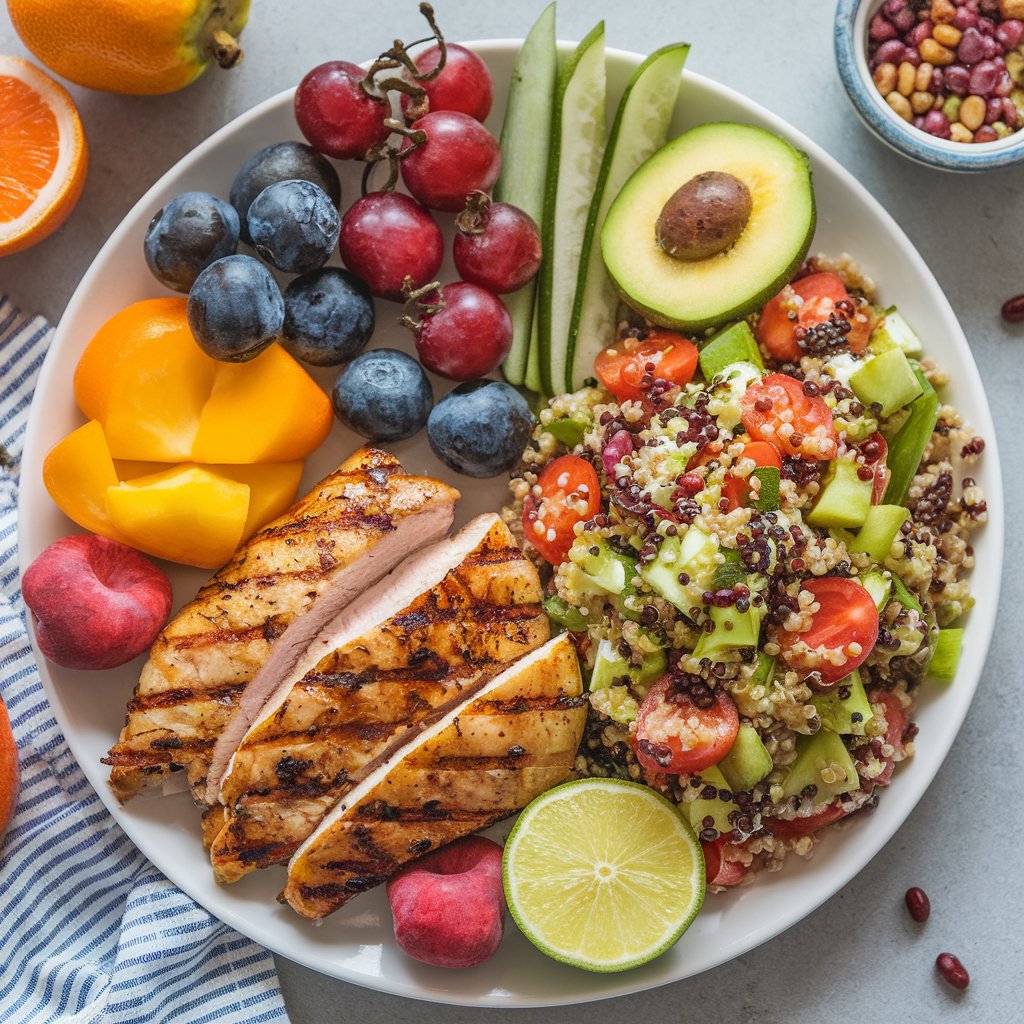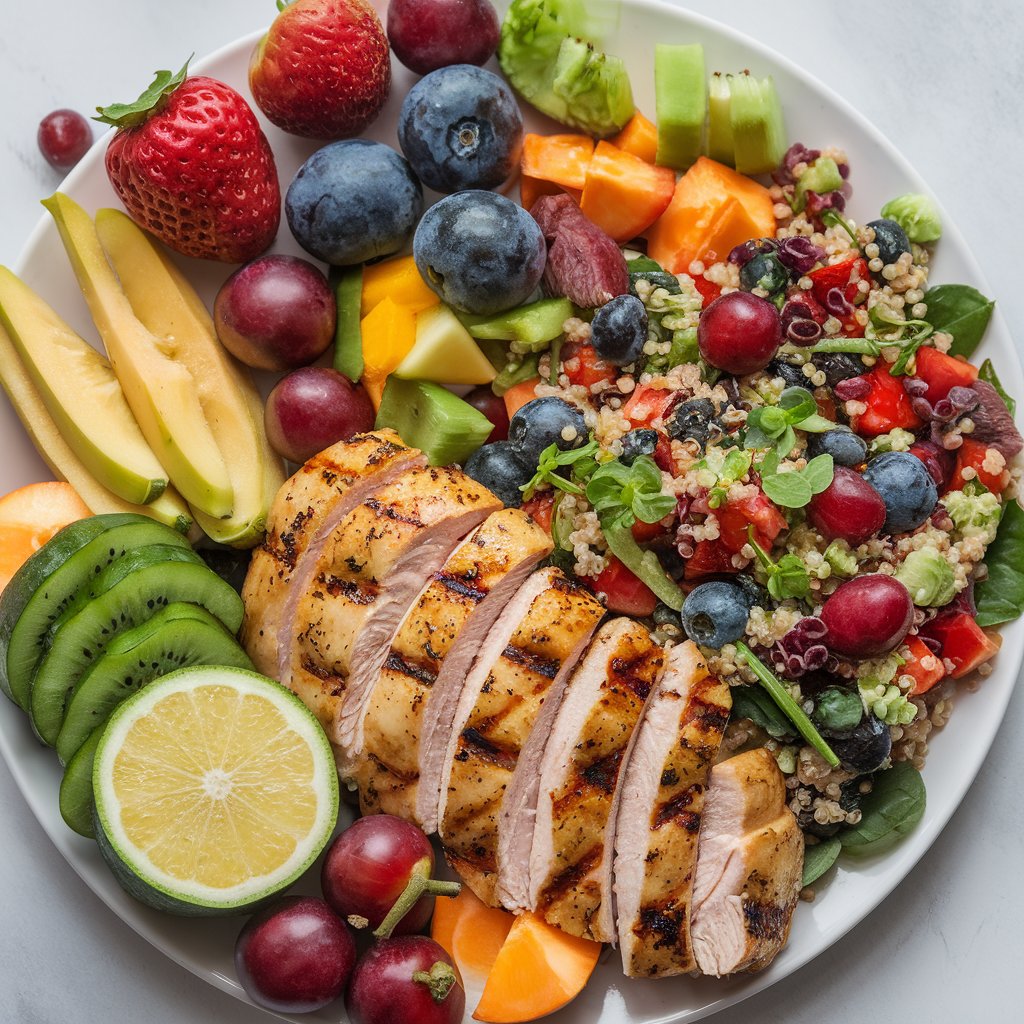Feeling sluggish after heavy meals?Tired of food choices?Discover a light and refreshing.In this post, we’ll explore light food options.From quick snacks to full meals, you’ll find it all.Ready to lighten up your diet?
1. Introduction to Light Food
1.1 Definition of Light Food
Light food refers to meals and snacks that are low in calories, easy to digest, and packed with nutrients. These foods are typically fresh, minimally processed, and don’t leave you feeling heavy or sluggish after eating.
1.2 Importance of Light Food in Diet
Including light food in your diet is crucial for maintaining a healthy weight, supporting digestion, and providing your body with essential nutrients. It’s particularly beneficial for those looking to improve their overall health or manage certain health conditions.
1.3 Benefits of Consuming Light Food
- Improved digestion
- Better weight management
- Increased energy levels
- Enhanced nutrient intake
- Reduced risk of certain diseases
“Light food doesn’t mean light on flavor or satisfaction. It’s about nourishing your body without weighing it down.”
2. Key Characteristics of Light Food
2.1 Low-Calorie Content
Light foods are typically lower in calories compared to their heavier counterparts. This doesn’t mean they’re less filling, though. Many light foods are rich in fiber, which helps you feel full and satisfied.
2.2 High Nutrient Density
One of the best things about it is that it’s often packed with vitamins, minerals, and other beneficial compounds. You’re getting a lot of nutritional bang for your caloric buck!
2.3 Easy to Digest
Light foods are generally easier on your digestive system. They don’t require as much energy to break down, which means you’re less likely to feel sluggish after eating.

3. Types of Light Food
3.1 Fruits
Fruits are nature’s candy! They’re sweet, refreshing, and full of vitamins and antioxidants. Some great options include berries, citrus fruits, and melons.
3.2 Vegetables
Veggies are the backbone of any light diet. They’re low in calories but high in fiber and nutrients. Leafy greens, cruciferous vegetables, and colorful bell peppers are all excellent choices.
3.3 Lean Proteins
Protein is essential for building and repairing tissues. Opt for lean sources like chicken breast, fish, tofu, or legumes to keep your meals light but satisfying.
3.4 Whole Grains
Whole grains provide complex carbohydrates for sustained energy. They’re also rich in fiber and various nutrients. Think quinoa, brown rice, or oats.
4. How to Incorporate it in Your Diet
4.1 Breakfast Ideas
- Overnight oats with fresh berries
- Greek yogurt parfait with granola and fruit
- Whole grain toast with avocado and poached egg
4.2 Lunch Suggestions
- Mixed green salad with grilled chicken
- Vegetable soup with a side of whole grain crackers
- Hummus and vegetable wrap
4.3 Dinner Options
- Baked salmon with roasted vegetables
- Stir-fry tofu and vegetables with brown rice
- Zucchini noodles with tomato sauce and turkey meatballs
4.4 Snacks and Smoothies
- Apple slices with almond butter
- Carrot sticks with hummus
- Green smoothie with spinach, banana, and almond milk
5. Recipes for Light Food
5.1 Fruit Salad Recipe
Mix diced watermelon, strawberries, and blueberries. Add a squeeze of lime juice and a sprinkle of mint leaves. It’s refreshing and perfect for summer!
5.2 Vegetable Soup Recipe
Sauté onions, carrots, and celery. Add vegetable broth, diced tomatoes, and your favorite veggies. Simmer until vegetables are tender. Season with herbs and enjoy!
5.3 Grilled Chicken Recipe
Marinate chicken breast in lemon juice, olive oil, and herbs. Grill until cooked through. Serve with a side of grilled vegetables for a light and tasty meal.
5.4 Quinoa Salad Recipe
Cook quinoa and let it cool. Mix with diced cucumber, cherry tomatoes, and feta cheese. Dress with olive oil and lemon juice. It’s a perfect light lunch or side dish!

6. Tips for Eating Light Food
6.1 Portion Control
Even with light foods, portion control is important. Use smaller plates, and listen to your body’s hunger and fullness cues.
6.2 Hydration
Staying hydrated can help you feel full and energized. Drink water throughout the day, and try infusing it with fruits for added flavor.
6.3 Mindful Eating
Pay attention to your food while eating. Enjoy the flavors and textures. This can help you feel more satisfied with your meals.
7. Common Misconceptions About Light Food
7.1 Light Food and Hunger
Some people worry that it won’t keep them full. In reality, many light foods are high in fiber and protein, which can keep you satisfied for hours.
7.2 Nutrient Deficiency Concerns
A well-planned light food diet can provide all the nutrients you need. It’s all about choosing a variety of foods to ensure you’re getting a balanced intake.
7.3 Taste and Satisfaction
It doesn’t have to be bland! With the right recipes and seasonings, light meals can be just as delicious and satisfying as heavier options.
8. Conclusion
8.1 Recap of Key Points
Light food is nutritious, easy to digest, and can be a great addition to any diet. It comes in many forms, from fruits and vegetables to lean proteins and whole grains.
8.2 Encouragement to Try Light Food
Don’t be afraid to experiment with light food options. You might be surprised at how tasty and satisfying they can be!
8.3 Final Thoughts
Incorporating light food into your diet doesn’t mean giving up on enjoyable meals. It’s about finding a balance that makes you feel good both during and after eating.



